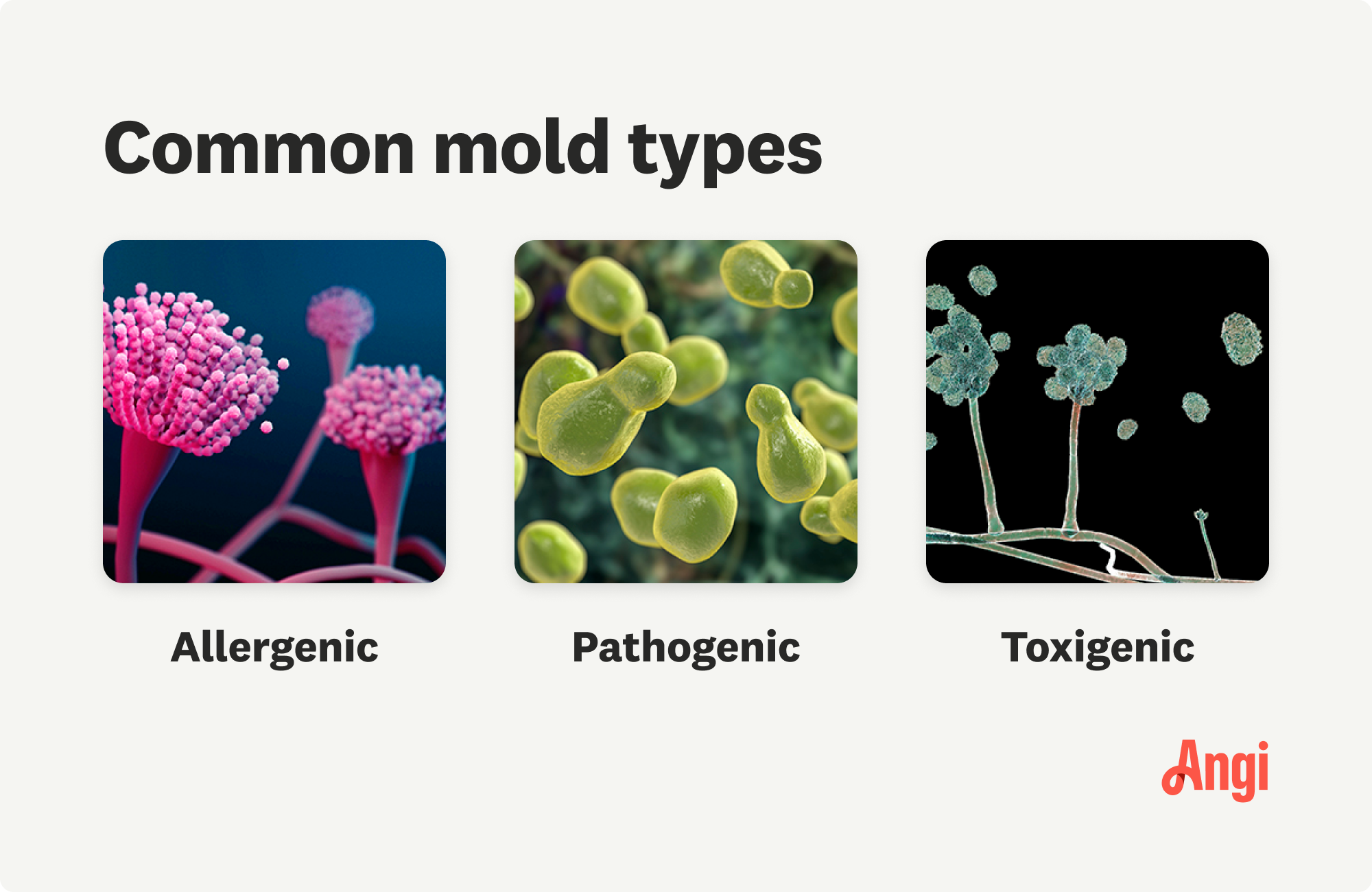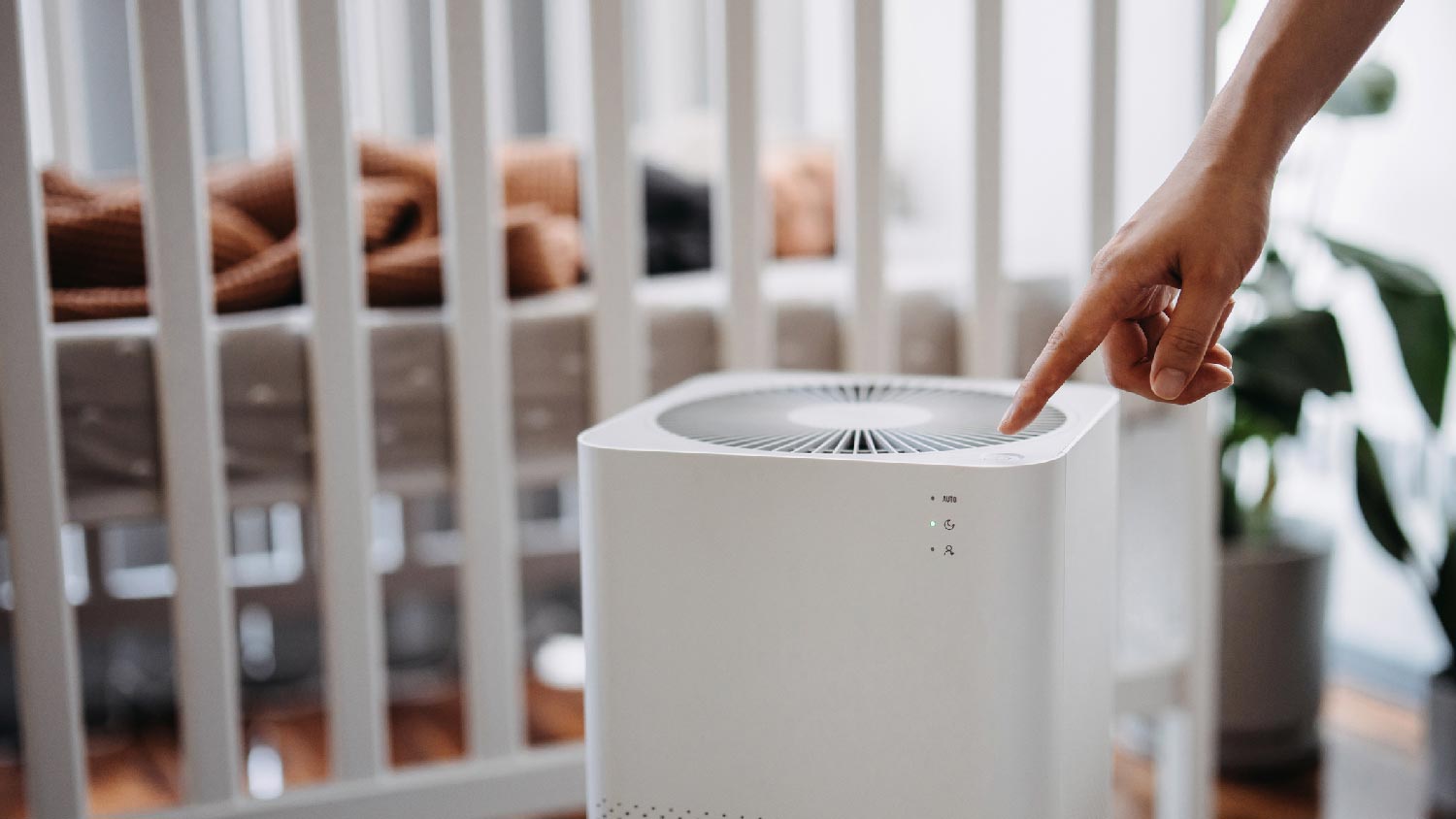
The cost of a mold inspection might seem high, but it’s one of the best investments you can make for your health and home. Read on to learn cost-saving tips.
Buying a dehumidifier helps, but it isn’t a cure-all


Almost all house mold is dangerous and should be removed immediately.
Most homes have some sort of mold issue, and can self-correct with humidity drops.
You should only remove mold yourself if it’s a tiny spot and you know the type.
You should call a professional for any mold issue at all.
Finding mold in your house is never fun, but what causes it? Mold is a fungus and is present everywhere around us, as it needs oxygen and moisture to survive and grow. What causes mold? The leading cause of mold in your house is an excess of moisture, which is why mold is commonly found between walls, under sinks, in basements and crawl spaces, and in other areas of the home near water and with low ventilation.
Most mold is easy to eradicate, but it’s always easier to fend it off than to remove it. Dehumidifiers can help with mold, but understanding this unwanted growth—and taking measures to prevent it—will go a long way in ensuring a mold-free home.
Due to the health risks involved, it’s imperative to call a professional if you see mold, suspect its presence, or have unexplained health complications. You can shop around and compare quotes from a few professionals to get a better idea of mold remediation costs in your area.

Allergenic mold, as you have probably guessed, is mold that is known to cause allergic symptoms. These symptoms usually show in the form of sneezing, a runny nose, skin irritation, and light coughing. Allergenic molds are the least dangerous of the three types, but when left untreated can grow quickly and cause significant long-term health issues.
Pathogenic molds in your home are more serious than allergenic and can cause infections, especially in people with compromised immune systems. Unlike a minor cough or runny nose that is characteristic of allergenic mold, pathogenic molds can cause more serious issues like pneumonia, fatigue, and neurological issues.
Toxigenic mold is toxic, made even more serious by the fact that unless you are an untrained mold professional, it’s hard to tell the difference between the three types listed here. Toxigenic mold—like Stachybotrys, or black mold—produces mycotoxins that are almost guaranteed to cause serious health issues. Call a local mold professional immediately if you see any mold even resembling black mold.
Mold is caused by a number of factors. Any one of the below causes can encourage mold growth, but in reality, it’s usually a combination of two or three. Some common causes include:
Poor ventilation limits the airflow in a space, preventing moisture from escaping. As a result, excess humidity and moisture build up, creating an ideal environment for mold to thrive, particularly in bathrooms, basements, and kitchens.
Water leaks from pipes, roofs, or windows allow moisture to seep into materials like wood, drywall, and insulation. This constant moisture accumulation fosters mold growth, as mold needs a consistent water source to grow and spread.
It’s a good idea to check humidity levels periodically. High humidity levels, above 50%, create a damp environment that encourages mold growth. When the air is saturated with moisture, materials such as carpets, walls, and ceilings can absorb the moisture, providing mold with the perfect conditions to flourish.
Condensation occurs when warm, moist air comes into contact with cool surfaces, such as windows, pipes, or walls. This water buildup can penetrate materials, promoting mold growth, especially during colder months when homes are sealed tight and moisture is trapped inside.
Leaving damp materials, such as wet clothes, towels, or construction materials, in an area allows them to absorb moisture from the air or from spills. Mold thrives on these damp surfaces, leading to potential infestations if the materials aren’t dried out quickly.
Everyday activities like showering and cooking introduce moisture into the air. Without proper ventilation to carry the moisture outside, mold can accumulate on walls, ceilings, and floors.
The location and climate of a building play a major role in mold growth. Areas with high rainfall or humidity, such as coastal or tropical climates, are more prone to mold. Mold cannot grow in a dry environment as it feeds on water to grow. Controlling humidity is the number one way to combat mold growth in your home.

Preventing mold is something that needs to be considered at least seasonally if not monthly or even weekly. Mold grows very easily, but the good news is you can usually keep it to a minimum if you take preventative measures.
A dehumidifier works great at keeping a room’s relative humidity within a normal range. It’s most effective when placed in spaces where it can remove the most moisture, especially areas with low ventilation. This is why you often see dehumidifiers in basements, bathrooms, and other rooms where you may not have a fan, but have increased moisture, as dehumidifiers are great at preventing mold.
An air purifier by itself won’t control humidity—while some can, they’re expensive—but an air purifier helps remove harmful particles in the air. Those with compromised immune systems should consider an air purifier in their house or, at the very least, in their bedrooms. Some HVAC systems will have dehumidifiers and air purifiers installed, and that’s really the best option (but also the most pricey).
Proper ventilation is key to preventing mold. Sometimes all you need is to place a fan in a high-traffic area, or a fan pointed out of the window in order to move air from the room to the outdoors. Flipping on a bathroom fan when showering or bathing helps keep humidity in check.
Mold is a particle that exists in the air, which also means it settles on surfaces. While it isn’t realistic to wipe down every wall and ceiling on a regular basis, keeping surfaces clean can prevent or even kill mold particles.
Remember we said prevention is better than fixing an existing mold problem? Humans aren’t great at guessing humidity levels, so buying an inexpensive thermometer/hygrometer combo and placing one in a few of your rooms—especially basements—is a great way to measure humidity in your home. Remember, the sweet spot is 25-50% relative humidity.
Removing mold yourself is something that you should reconsider. Once mold is seen it has already spread. It’s extremely easy to disturb, causing it to go airborne and impact your health. We strongly recommend having a professional handle all mold problems, but there are some ways you can tackle small mold spots on your own.
Wear heavy protective gear over eyes and airways.
Investigate and locate the mold source.
Use powerful antimicrobial sprays. Another alternative is a bleach and water mix.
Ventilate thoroughly for at least 24 hours after removing the mold.
If you have one, dehumidify the room after ventilation.
Knowing which mold you should and shouldn’t tackle on your own, however, is extremely difficult. Mold test kits are often unreliable and it’s hard to tell the difference between toxic and allergenic mold on sight alone. A professional may seem expensive, but mold is one of those things where it’s best to spend money to make sure it’s done right—both for your home, and your health.
According to data from Angi customers, a majority of people (53.2%) request mold removal because they can actually see or smell mold in their home. Another 19% experience cold, allergy, or asthma symptoms they believe are related to mold in their homes. Call a pro for mold testing and removal ASAP if you notice any possible signs of mold in your home.
From average costs to expert advice, get all the answers you need to get your job done.

The cost of a mold inspection might seem high, but it’s one of the best investments you can make for your health and home. Read on to learn cost-saving tips.

Mold remediation cost can quickly escalate. But if you have mold in your home, the cost for mold remediation is worth it.

Mold is a common concern for many homeowners, especially black mold. Is black mold toxic? Yes, and that's why you need to know how to identify it.

Not sure what type of mold is forming in your home? We’re breaking down black mold vs regular mold.

Mold can enter your air ducts and lead to poor indoor air quality. Use this guide to learn how to get rid of mold in air ducts for healthier air.

Mold in your furnace can cause long-term problems for your family. If there’s mold present in your furnace, the spores will spread quickly through the home. Here’s how to take quick action to fix the problem.